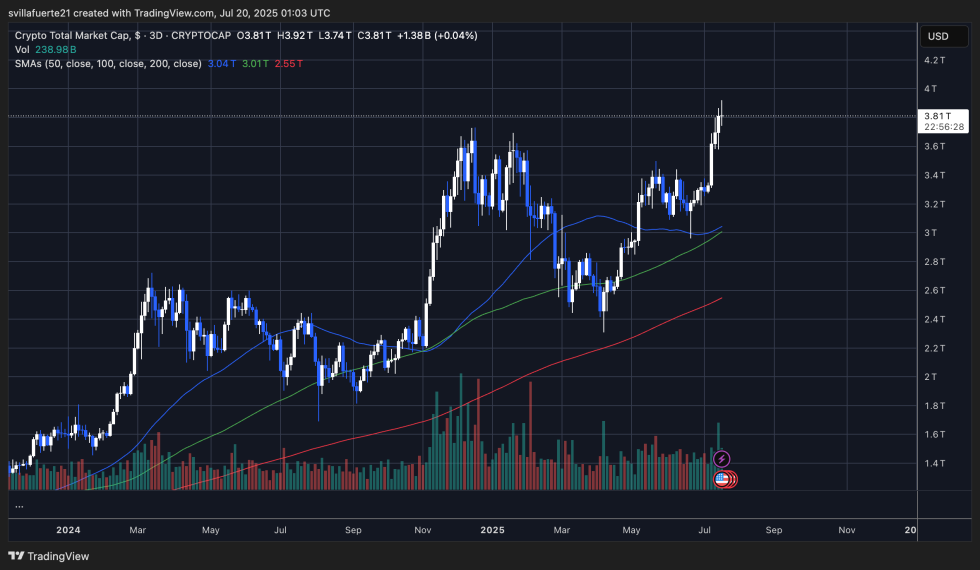Article:
In a significant move for stablecoin regulation within the United States, President Donald Trump enacted the GENIUS Act on Friday. After extensive deliberations and two previous dismissals, the legislation has successfully navigated Congress, offering a more defined legal structure for payment stablecoins and their integration into the digital economy. This law is designed to encourage innovation while maintaining the US dollar’s influence in the digital financial landscape.
Despite its passage, the bill faced opposition. One of the most outspoken critics was Representative Marjorie Taylor Greene from Georgia’s 14th District, who chairs the DOGE Committee. Greene stood firm in her dissent against the GENIUS Act, expressing worries that it could pave the way for a Central Bank Digital Currency (CBDC) without explicitly prohibiting it. Her concerns reflect a broader conversation in Washington about the future of digital currencies, potential surveillance issues, and economic freedom.
Nevertheless, the enactment of the GENIUS Act illustrates a growing bipartisan acknowledgment of the necessity for regulatory certainty to stimulate cryptocurrency innovation in the US. While opinions remain divided on its potential ramifications, the law is now in place, and its impact on stablecoins and decentralized finance may soon become evident.
Marjorie Taylor Greene Criticizes GENIUS Act
Following the enactment of the GENIUS Act, Rep. Marjorie Taylor Greene, leader of the DOGE Committee, issued a strong critique. Greene, a dissenting voter, warned that the American public is largely unaware of the bill’s implications. She described it as a Trojan horse for developing Central Bank Digital Currencies (CBDCs), asserting, “This legislation regulates stablecoins and indirectly facilitates a Centralized Bank Digital Currency.”
Greene has consistently opposed any legislation that could potentially lead to CBDCs, cautioning that a government-controlled digital currency could be misused against citizens. “Do you truly trust your government to refrain from such actions?” she questioned. “I don’t.”
Despite her opposition to the GENIUS Act, Greene supported the Anti-CBDC Surveillance State Act, which aims to prevent the Federal Reserve from creating a CBDC. Although it passed the House, Greene indicated the Senate lacks sufficient votes to advance the bill.
She also backed the Clarity Act, which cleared the House and includes measures for self-custody and explicit regulatory standards for digital assets. However, she vowed to oppose it if self-custody protections are removed during Senate revisions, emphasizing, “The key element that must remain is safeguarding individuals’ self-custody of their digital currency.”
Citing the US departure from the gold standard in 1971, Greene believes the nation is once again at a pivotal juncture, transitioning from physical cash to a fully digital currency system. “Your ability to transact will ultimately reside in digital accounts under the control of banks and the government,” she cautioned.
Analysis of Crypto Market Capitalization
The total cryptocurrency market capitalization has surged beyond the $3.6 trillion mark, reaching a new annual peak of $3.81 trillion, as illustrated in the chart. This rise follows several weeks of stabilization and signals a resurgence of bullish momentum across the digital asset space. The increase was supported by robust green candles and rising volume, indicating widespread participation among major cryptocurrencies and altcoins.

Notably, the breakout confirms a bullish pattern, with successive higher highs and lows since the June bottom. The 50-day simple moving average (SMA) is approximately $3.04T, and the 100-day SMA is near $3.01T — both substantially beneath current price levels, affirming the uptrend’s strength. The 200-day SMA at $2.55T further corroborates the long-term bullish stance.
This market breakout aligns with newly established legal clarity in the US, especially following the signing of the GENIUS Act, which enhances confidence in stablecoins and tokenized finance. While Bitcoin and Ethereum continue to lead, altcoins are now gaining traction as capital flows throughout the ecosystem.
Featured image from Dall-E, chart from TradingView










